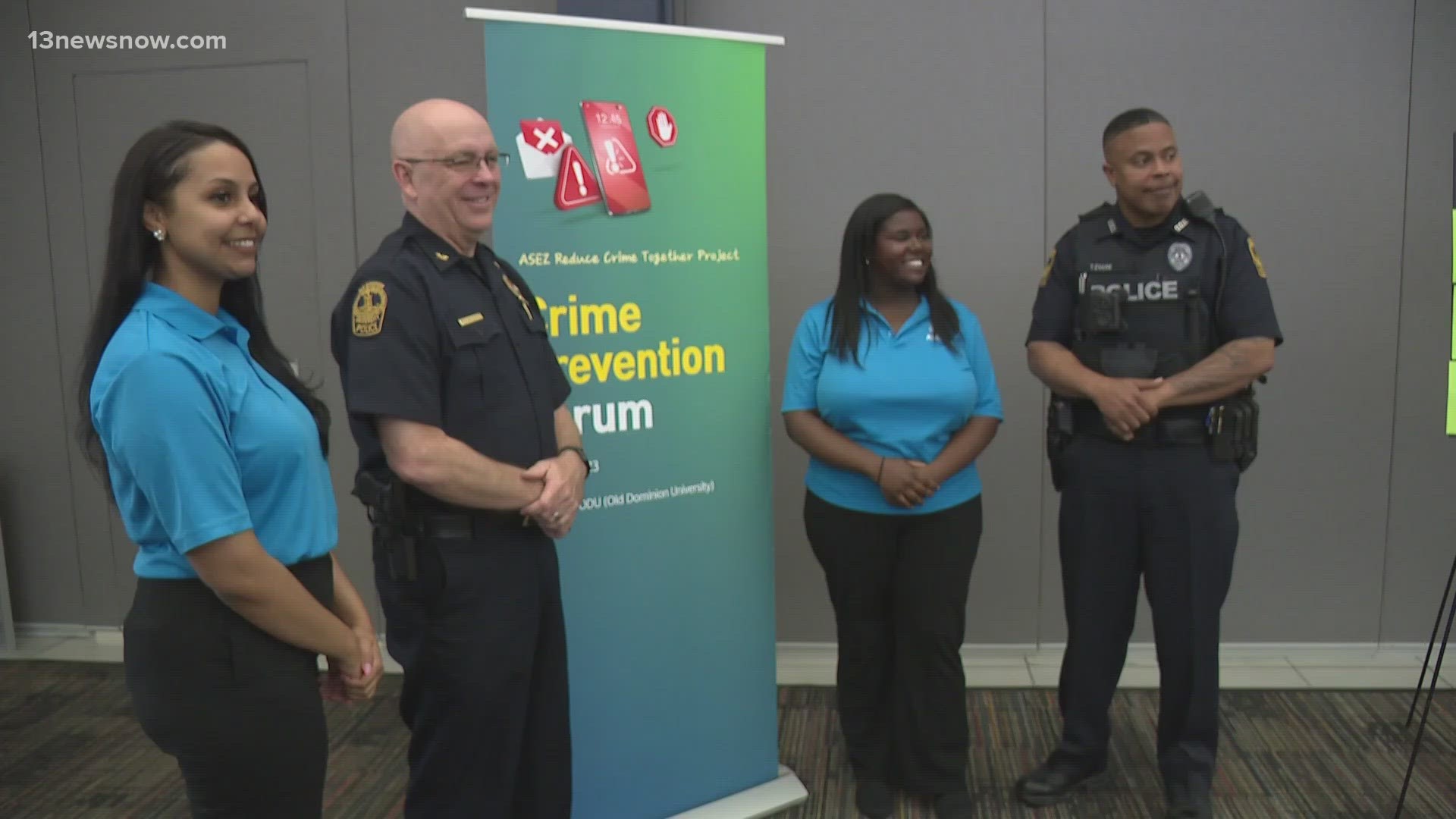Women unite for empowering home build initiative in Norfolk – 13newsnow.com

Report on Habitat for Humanity’s “Women Build” Initiative in Norfolk
Executive Summary
Habitat for Humanity of South Hampton Roads is actively advancing several United Nations Sustainable Development Goals (SDGs) through its “Women Build” initiative. This report details the construction of two homes in Norfolk, Virginia, by female volunteers. The project directly addresses the need for affordable housing while empowering women, thereby contributing significantly to SDG 5 (Gender Equality), SDG 10 (Reduced Inequalities), and SDG 11 (Sustainable Cities and Communities).
Project Analysis: Empowering Communities Through Construction
Program Objectives and SDG Alignment
The “Women Build” program is a multifaceted initiative with two primary objectives that align with global sustainability targets:
- To empower women: By providing a platform for women to learn construction skills, lead, and collaborate in a traditionally male-dominated field, the program directly supports SDG 5: Gender Equality. Volunteers gain new skills and a sense of empowerment, as noted by Frank Hruska, CEO of Habitat for Humanity of South Hampton Roads.
- To provide affordable housing: The construction of homes for low-income families addresses a critical community need. This work is a direct contribution to SDG 11: Sustainable Cities and Communities, specifically Target 11.1, which aims to ensure access for all to adequate, safe, and affordable housing.
Project Scope and Milestones
The current build involves the construction of the 248th and 249th homes by the South Hampton Roads chapter. The project brings together a diverse group of women, including a team of nurses from Chesapeake Regional Medical Center’s Emergency Department and community leaders like Dr. Tamika Quinn, a military veteran and two-time stroke survivor.
Contribution to Sustainable Development Goals (SDGs)
SDG 1: No Poverty & SDG 10: Reduced Inequalities
The initiative provides a direct pathway out of poverty and reduces systemic inequalities by:
- Providing homeownership opportunities to families, with 90% of recipients being single mothers.
- Selling the homes at a discounted price with a zero-percent interest mortgage, which facilitates asset building and financial stability.
- Creating safe and stable home environments, which are foundational for children’s development and a family’s economic progress.
SDG 5: Gender Equality
The “Women Build” program is a targeted effort to advance gender equality. Volunteer Jennifer Morrison, a Nurse Manager, highlighted the profound impact of “helping a mother and her children have a safe and beautiful home.” The program empowers women on multiple levels:
- Volunteers: Women learn valuable, transferable construction skills and gain confidence.
- Homeowners: The program disproportionately benefits single mothers, providing them with the security and equity of homeownership, a key factor in closing the gender wealth gap.
SDG 17: Partnerships for the Goals
The success of this initiative is a testament to effective partnerships. It demonstrates a powerful collaboration between:
- A non-profit organization (Habitat for Humanity).
- Corporate and community groups (nurses from Chesapeake Regional Medical Center).
- Individual volunteers driven by a spirit of service, such as Dr. Tamika Quinn, who stated, “The more God has blessed you, the more you should want to bless others with.”
Conclusion
The Habitat for Humanity “Women Build” week in Norfolk is more than a construction project; it is a practical and impactful model for achieving sustainable development at the community level. By building homes, the initiative simultaneously builds skills, fosters gender equality, reduces poverty, and strengthens community bonds. The program serves as an open invitation for continued community participation to build a more equitable and sustainable future for families in South Hampton Roads.
Which SDGs are addressed or connected to the issues highlighted in the article?
-
SDG 1: No Poverty
The article highlights the provision of affordable housing to families in need, specifically single mothers. By selling homes at a discounted price with a zero-percent mortgage, the initiative directly addresses economic vulnerability and helps families build assets, a key component in breaking the cycle of poverty.
-
SDG 5: Gender Equality
The initiative is explicitly named “Women Build” and is described as a program to “empower women.” It provides women with the opportunity to learn new skills in construction, a traditionally male-dominated field. Furthermore, the fact that “90% of the homes they build go to single mothers” directly supports the economic empowerment and security of women.
-
SDG 11: Sustainable Cities and Communities
The core focus of the article is “tackling the need for affordable homes” within the community of Norfolk. The construction of “safe and beautiful” houses for families contributes directly to creating inclusive, safe, and sustainable urban environments.
-
SDG 17: Partnerships for the Goals
The project is a clear example of a partnership in action. It involves a non-profit organization (Habitat for Humanity of South Hampton Roads), community volunteers (nurses from Chesapeake Regional Medical Center, a military veteran), and the families receiving the homes, all working together to achieve a common goal.
What specific targets under those SDGs can be identified based on the article’s content?
-
Target 1.4:
“By 2030, ensure that all men and women, in particular the poor and the vulnerable, have equal rights to economic resources, as well as access to basic services, ownership and control over land and other forms of property…” The article describes how the program provides single mothers with homeownership through a “zero-percent mortgage and at a discounted price,” directly aligning with this target of providing access to property and economic resources for vulnerable groups.
-
Target 5.a:
“Undertake reforms to give women equal rights to economic resources, as well as access to ownership and control over land and other forms of property…” This target is addressed as the initiative specifically enables women, particularly single mothers (90% of recipients), to gain ownership of a major economic asset—a home.
-
Target 11.1:
“By 2030, ensure access for all to adequate, safe and affordable housing and basic services…” The entire “Women Build” initiative is centered on this target. The article explicitly states the program tackles “the need for affordable homes” and provides “a safe and beautiful home” for families.
-
Target 17.17:
“Encourage and promote effective public, public-private and civil society partnerships…” The project exemplifies a civil society partnership. Habitat for Humanity, a non-profit, mobilizes community members like nurses and veterans to build homes, demonstrating a collaborative approach to addressing social needs.
Are there any indicators mentioned or implied in the article that can be used to measure progress towards the identified targets?
-
Number of affordable housing units built:
The article explicitly states that the two homes being built are the “248th and 249th homes built by Habitat for Humanity of South Hampton Roads.” This is a direct quantitative indicator of progress towards providing affordable housing (Target 11.1).
-
Proportion of housing provided to vulnerable groups:
The CEO states that “90% of the homes they build go to single mothers.” This percentage is a specific indicator measuring the focus on vulnerable populations and women (Targets 1.4 and 5.a).
-
Provision of affordable financing:
The mention of a “zero-percent mortgage and at a discounted price” serves as a qualitative indicator of the affordability of the housing provided, directly relevant to ensuring access for low-income families (Targets 1.4 and 11.1).
-
Number of women empowered with new skills:
While not quantified, the article implies this indicator by stating the program helps women in “learning new traits” and is a “hands-on initiative to empower women.” The number of women volunteers participating in the “Women Build” program could be tracked as a measure of this empowerment (relevant to SDG 5).
SDGs, Targets and Indicators Table
| SDGs | Targets | Indicators (Identified or Implied in the Article) |
|---|---|---|
| SDG 1: No Poverty | 1.4: Ensure the poor and vulnerable have equal rights to economic resources and ownership of property. | – Provision of homeownership to families in need. – Percentage of homes provided to single mothers (90%). |
| SDG 5: Gender Equality | 5.a: Give women equal rights to economic resources and access to ownership of property. | – Number of women participating in the “Women Build” initiative. – Number of women gaining new skills (“learning new traits”). – 90% of homes are provided to single mothers. |
| SDG 11: Sustainable Cities and Communities | 11.1: Ensure access for all to adequate, safe and affordable housing. | – Total number of homes built (249). – Description of homes as “safe and beautiful.” – Provision of affordable financing (“zero-percent mortgage and at a discounted price”). |
| SDG 17: Partnerships for the Goals | 17.17: Encourage and promote effective civil society partnerships. | – The existence of the partnership between Habitat for Humanity (non-profit) and community volunteers (nurses, veterans). |
Source: 13newsnow.com

What is Your Reaction?
 Like
0
Like
0
 Dislike
0
Dislike
0
 Love
0
Love
0
 Funny
0
Funny
0
 Angry
0
Angry
0
 Sad
0
Sad
0
 Wow
0
Wow
0









































































